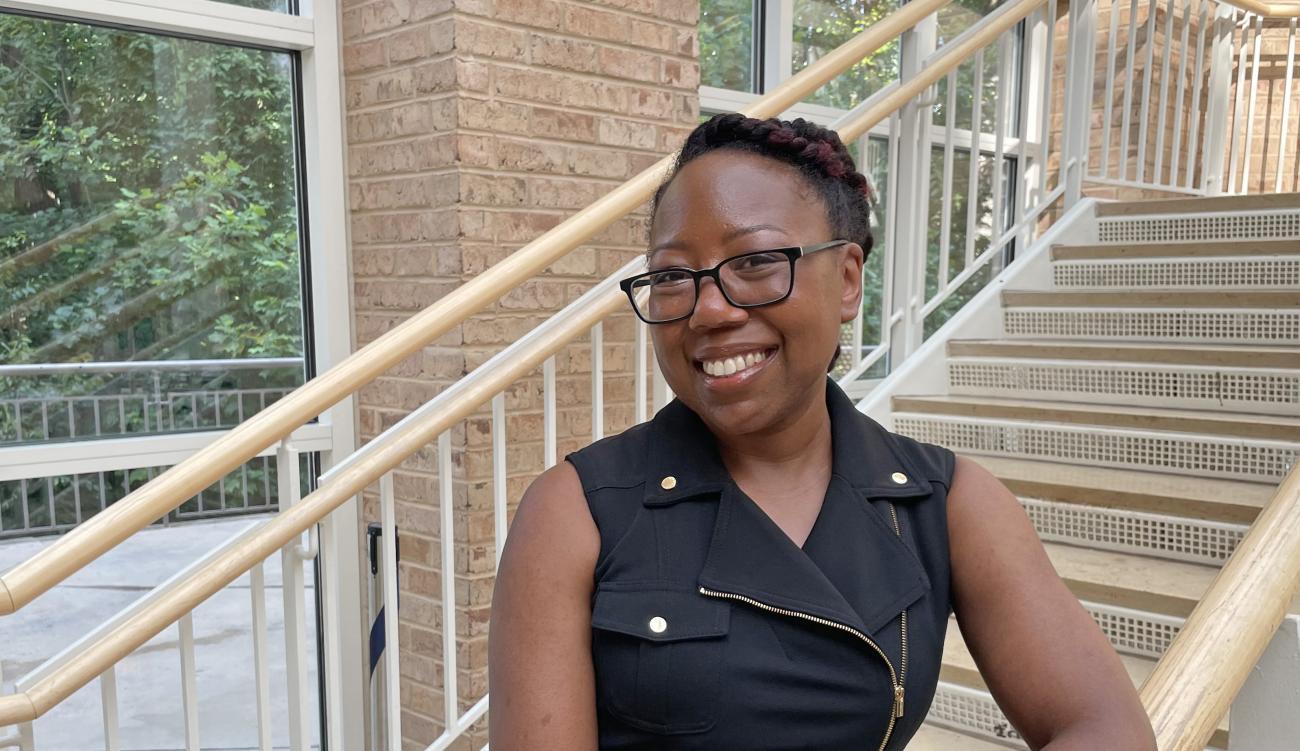National Science Foundation supporting research into the mysteries and mechanisms of noncoding RNA
By Jerry Grillo
Karmella Haynes wants to shine some light on the “dark matter” of the genome, and the National Science Foundation (NSF) is helping her flip the switch.
Haynes, assistant professor in the Wallace H. Coulter Department of Biomedical Engineering at Georgia Tech and Emory University, is leading a team of multi-disciplinary investigators who were awarded a four-year, $2.1 million grant from NSF to explore this dark matter and illuminate how the genome controls living systems in all their complexity.
It’s large space to explore. Only two percent of the human genome is known to provide instructions to build proteins, a process essential to higher functioning life. This leaves 98 percent of the genome as a biological frontier known as dark matter – these segments do not encode for protein, like the other two percent.
“A lot of progress has been made in studying this part of the genome, but what we don’t know yet can be very useful,” said Haynes, whose lab works on the front line of synthetic biology, and is typically dedicated to protein engineering, including the investigation and design of chromatin-based systems for controlling gene expression in cancer and other cells.
For this project, funded through February 2027, Haynes is expanding her focus to include RNA engineering, noting that some of those dark regions of the genome can produce long noncoding RNAs (lncRNAs). Usually found in very small amounts within a cell, lncRNAs have nonetheless been found to have an impact on biological processes like cell growth and survival, cell identity and environmental interactions, and various human and animal diseases.
“The next step would be to tap into the biomedical and biotechnology potential of these RNAs,” said Haynes, who is principal investigator on the multi-institutional project. Her co-principal investigators are Alisha Jones, assistant professor of chemistry at New York University, and Keriayn Smith, assistant professor of genetics at the University of North Carolina-Chapel Hill. Joining them are Emory biochemist Anita Corbett; Tian Hong, a computational biologist at the University of Tennessee; and Aaron Johnson, a molecular geneticist at the University of Colorado.
Together, they’ll delve into the mysteries and mechanisms of lncRNA.
Investigators, Assemble!
Haynes met her collaborators at an NSF Ideas Lab gathering in the summer of 2022. The program had an acronym that sounds like something borrowed from Star Wars, D2R2, which actually stands for Dark Dimensions of the RNA Regulome.
Ideas Labs are intensive workshops facilitated by NSF with the intention of finding innovative solutions to grand challenges. D2R2 brought together engineers, chemists, mathematicians, computer scientists, and others with a goal of developing new theories and models for understanding non-coding RNAs, and new approaches for manipulating and controlling non-coding RNA activity.
“We all received a crash course on what the scientific community understands about all of this, then we got to work,” said Haynes. Her two co-PIs, Jones and Smith, help comprise what Haynes believes is a unique leadership trifecta. “I rarely hear of a large multi-institutional grant that is led by three black women. I think that is significant.”
Also significant, she added, is the project’s emphasis on outreach. Haynes and her team are working with students from Project ENGAGES at Georgia Tech – a high school science education program in partnership with minority-serving public schools in Atlanta. The plan is to provide the students a focus presentation on RNA technology.
Ultimately, Haynes hopes the NSF project will yield innovations that would enhance our ability to predict and mitigate the effects of changing environments on organisms and ecosystems – in other words, epigenetic control. If they can engineer lncRNAs to fine tune their activity, researchers should be able to generate beneficial biomolecules for biomedical applications.
“We expect at minimum to push the boundaries of knowledge by trying to build functional RNAs,” Haynes said. “But if we could develop an effective tool for this kind of epigenetic control, that would be remarkable. This could have some exciting implications for bioengineering.”
Latest BME News
Jo honored for his impact on science and mentorship
The department rises to the top in biomedical engineering programs for undergraduate education.
Commercialization program in Coulter BME announces project teams who will receive support to get their research to market.
Courses in the Wallace H. Coulter Department of Biomedical Engineering are being reformatted to incorporate AI and machine learning so students are prepared for a data-driven biotech sector.
Influenced by her mother's journey in engineering, Sriya Surapaneni hopes to inspire other young women in the field.
Coulter BME Professor Earns Tenure, Eyes Future of Innovation in Health and Medicine
The grant will fund the development of cutting-edge technology that could detect colorectal cancer through a simple breath test
The surgical support device landed Coulter BME its 4th consecutive win for the College of Engineering competition.








